Recognizing insect bites
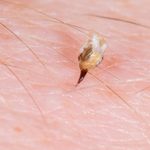
1. Bees
Although bees often cause people to panic, flail, and flee, these small insects are not actually trying to attack you. Actually, they would prefer to avoid you altogether, as long as you don't disturb them. However, if a bee does sting you, you'll develop an itchy, pink, raised welt—after the initial sharp pain subsides, according to Dr. Tsippora Shainhouse, a board-certified dermatologist practicing in Beverly Hills. If you can still see the stinger, gently scrape it away with a credit card. Avoid using your fingers or tweezers to pinch the stinger, as this could inject more venom into your skin, she advises.
Bee sting treatment:Dr. Shainhouse suggests treatments such as cool compresses, calamine lotion, and antihistamines taken by mouth, such as Benadryl, and possibly meat tenderizer. She explains that papain, an enzyme found in meat tenderizer, might help to disintegrate the pain-causing component of the venom. Dr. Shainhouse adds that another idea is that the venom's acidity is neutralized when it mixes with the tenderizer's alkalinity, which lessens the pain. To create a paste, try combining four parts water with one part meat tenderizer. Indications of a bee sting allergy include trouble breathing or swallowing, vomiting, diarrhea, feeling faint, disorientation, or excessive perspiration. If you experience any allergy symptoms following a bee sting, dial 911 right away.
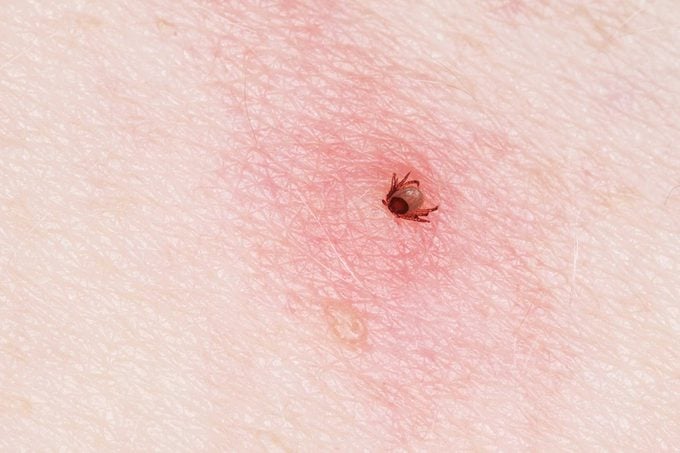
2. Tick
Dr. Shainhouse explains that tick bites are worrisome because they can spread infections like Lyme disease, ehrlichiosis, and Rocky Mountain spotted fever. The problem is that different kinds of ticks transmit these diseases, and you likely won't notice a tick bite on the day it happens, particularly if the tick is a nymph.rashAs it progresses, it typically appears within a few days of the tick bite. Dr. Shainhouse explains that "The typical bulls-eye rash may consist of one or more rings," and is a hallmark ofBorrelia burgdorferi and Borrelia mayoniiinfection, a spiral-shaped bacterium spread through the bite of aIxodesdeer tick. Symptoms may arise a week or two following a bite. Identifying tick bites can be tricky. The telltale bulls-eye rash might not be present; it could be uniformly red or absent altogether, even if you're infected. You might feel fine despite the rash, but you could also develop fevers and headaches.
Dealing with a tick bite:"Dr. Shainhouse cautions that a 20-day regimen of oral antibiotics should be started without delay." Fortunately, a tick bite doesn't invariably lead to infection.Lyme disease. In some instances, simply taking out the tick is enough, but it's crucial to consult with your healthcare provider to identify the tick and assess your risk of developing an infection.
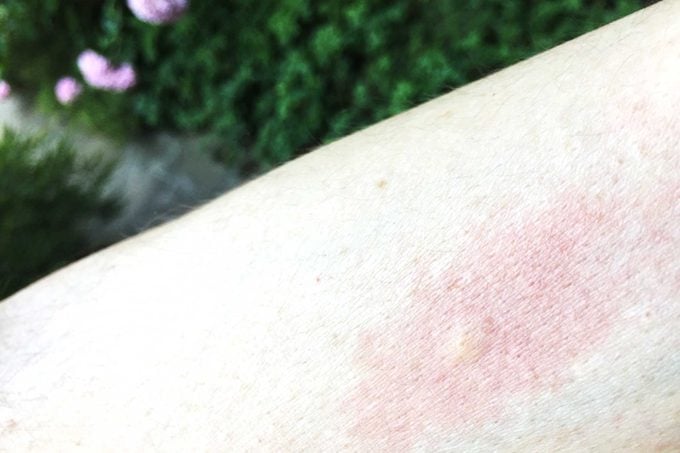
3. Mosquitoes
It's practically inevitable to get bitten by a mosquito in the summer, and it's true that some individuals are more prone to attracting these insects. According to a dermatologist,Doris Day, MD, FAAD, who serves as a clinical associate professor in theNYU Grossman School of Medicine's Dermatology Department., mosquitoesMosquitoes are drawn to individuals with type O blood and the presence of lactic acid and urea in their perspiration. Consuming beer outside or simply wearing dark-colored attire can increase your attractiveness to these insects. Beyond being bothersome, mosquitoes can spread dangerous infectious illnesses. Dr. Day notes, "They transmit a range of diseases, from West Nile virus to Chikungunya to Zika." A mosquito bite typically appears as a small, swollen white bump with a central red spot. It might become firm and reddish the next day.
Dealing with a mosquito bite:Giving in to the urge to scratch feels great, but fight it! Scratching can cause infections or leave scars. Dr. Day suggests a better approach: "Use a cold compress, aloe vera, or a cortisone cream or gel to reduce the itching."
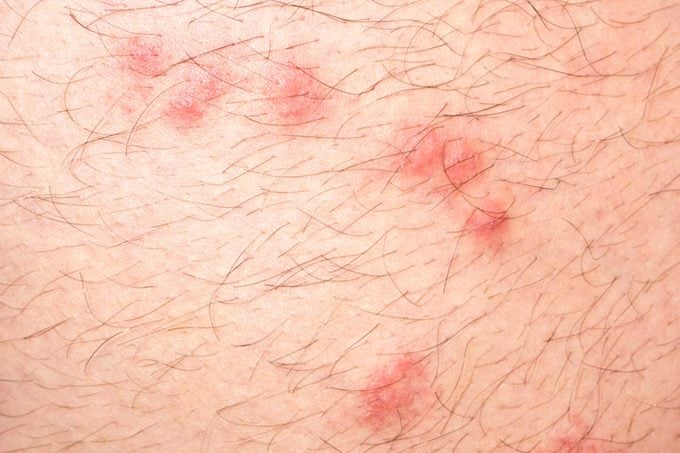
4. Fleas
It's better to stop problems before they start, so protect your pets from fleas. Flea bites are not only painful and annoying, but they can also spread tapeworms. If left unchecked, fleas will happily feast on you and your animal companions. While they can't fly, they are excellent jumpers, often targeting your lower legs.Flea bitesAccording to Dr. Valerie Goldburt of Advanced Dermatology PC in New York, "they typically appear as small, red, crusty bumps on the shins."
Treating flea bites:Dr. Goldburt suggests applying cortisone creams and calming lotions to alleviate the intense itchiness caused by the bumps. She also advises storing these creams in the refrigerator for a cooling effect. "Alternatively, ice cubes can be used to reduce itching by slowing down nerve signals," she says. If you observe these kinds of insect bites, consult your veterinarian regarding flea prevention and contact a pest control professional if you think you have a flea problem.

5. Brown recluse spider
The upside to encountering a brown recluse spider is that its behavior generally aligns with its name: it's reclusive and seldom seen.bitesEven without being intentionally bothered, this spider is still a significant hazard. The brown recluse, which lives in the southern and central parts of the U.S., likes to hide in dim, protected areas such as cellars and outbuildings. If you accidentally bother a brown recluse and it bites you, you might not notice immediately. Dr. Goldburt explains, "Typically, there's one bite that becomes a red area, possibly with blisters." He adds, "Symptoms can range from mild to very severe itching and discomfort. In some cases, bites can lead to necrosis, where the tissue becomes dark and dies."
Dealing with a bite from a brown recluse spider:According to Dr. Goldburt, a brown recluse spider bite can escalate into a serious medical situation requiring the excision of damaged tissue. He advises seeking medical attention if you think you've been bitten by one.

6. Bed bugs
1. Dr. Joshua Zeichner, the director of cosmetic and clinical dermatology research at Mount Sinai Hospital in New York City, points out that bedbug bites often show up in a distinctive pattern resembling "breakfast, lunch, and dinner." 2. This phrase refers to the tendency of bed bugs to bite a person, relocate, and then bite again, resulting in a line of bites. 3. Dr. Zeichner explains that these bites usually appear on the arms and legs, as these areas are exposed to the bed where the infestation is present.
Dealing with bedbug bites:Luckily, bed bug bitesThey typically disappear within a few days without intervention. However, if the itching becomes unbearable, Dr. Zeichner suggests applying a non-prescription hydrocortisone cream to alleviate inflammation and the urge to scratch.
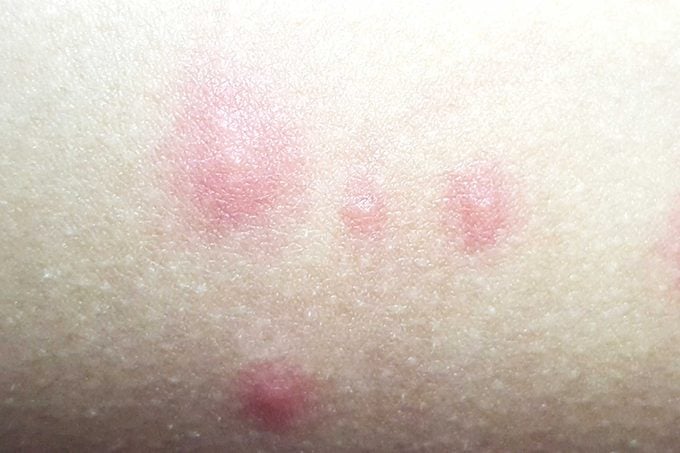
7. Chiggers
While you probably won't spot these tiny pests, you'll definitely notice their presence afterward. Chiggers aren't classified as insects; instead, they belong to the arachnid family, along with ticks and spiders. Although they can't fly, they'll still bite you if you're in grassy environments like golf courses, baseball fields, or playgrounds. Interestingly, only the larval stage of chiggers bites, essentially "teething" on your skin. They'll climb onto your clothes and search for exposed skin before they start feeding. "Chigger bites cause reddish bumps, each with a more intense red spot in the middle. These bumps can also look like pimples or hives," explainsAngela Lamb, MD, who heads the Westside Mount Sinai Dermatology Faculty Practice in New York City and also serves as an associate dermatology professor.
Dealing with chigger bites:Dr. Lamb suggests cooling down with a shower or cleaning the area with soap and water for comfort. "For itchy or burning sensations, I advise using cortisone cream or a similar ointment," she says.After Bite, featuring a blend of calming components to alleviate itching. I suggest using it for children, as well as adults who have delicate skin.After Bite Kids, a mild and soothing cream that alleviates discomfort right away.”
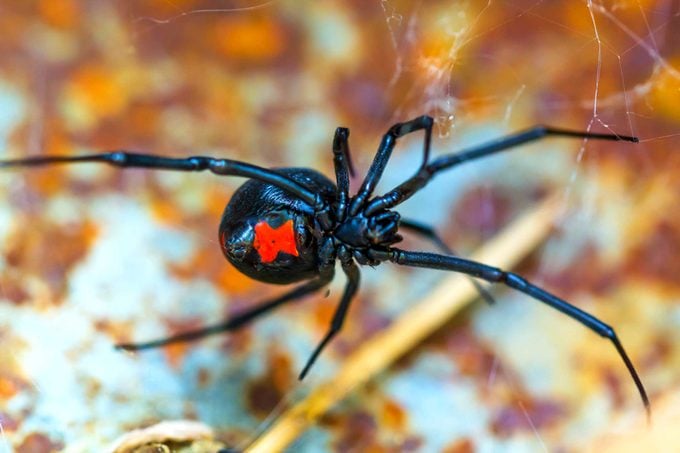
8. Black widow spider
The black widow spider, recognized by the red hourglass marking on its underside, thrives in the arid climates of the American South and West. These reclusive creatures prefer shadowy spots and inflict a bite that causes instant pain. Identifying their bites involves looking for swelling, redness, and possibly two puncture wounds. Within hours, symptoms can include muscle rigidity, nausea, vertigo, labored breathing, skin irritation, itching, shaking, and lower limb paralysis.
Dealing with a black widow spider bite:If a child is bitten, immediate emergency room attention is crucial because these spiders can be deadly to children. While en route to the hospital, cleanse the bite area with soap and cold water, and apply ice packs for 10-minute intervals, alternating on and off.

9. Fire ant
They might be tiny, but fire ants are extremely feisty and their stings hurt a lot. Plus, they're tough. Even floodwaters of a2017 tropical stormDiscouraged, the colony clumps together into a floating ball, drifting until the worker ants discover a suitable dry location. Typically, fire ants inhabit the southeastern and southwestern regions of the U.S. Their nests are commonly located in yards, recreational areas, and grazing lands. Dr. Lamb explains, "Fire ant stings are recognizable by clusters of raised, red bumps on the skin, similar to pus-filled blemishes. These circular marks frequently develop blisters on their surface soon after the sting."
Dealing with fire ant stings:Address these bites similarly to chigger bites by taking a refreshing shower, washing with soap and water, and experimenting with over-the-counter remedies such as...After Bite.

Seeking a natural way to soothe itching?
The primary sign of insect bites is intense itchiness. Despite the temporary satisfaction scratching provides, it's important to protect your skin and avoid prolonged scratching. Certain essential oils, such as citrus, peppermint, and eucalyptus, can offer calming relief. For further comfort, Dr. Will Cole, a functional medicine expert in Monroeville, Pennsylvania, recommends a couple of his preferred remedies, including baking soda and water. "Simply combine them into a paste, apply it to the bites, and leave it on for a short time before rinsing. It might sting slightly," Dr. Cole advises. He also suggests a warm bath, noting that "a warm bath with magnesium powder is an excellent, relaxing way to alleviate the itching."
Post a Comment for "Bug Bite ID: What's Biting You?"